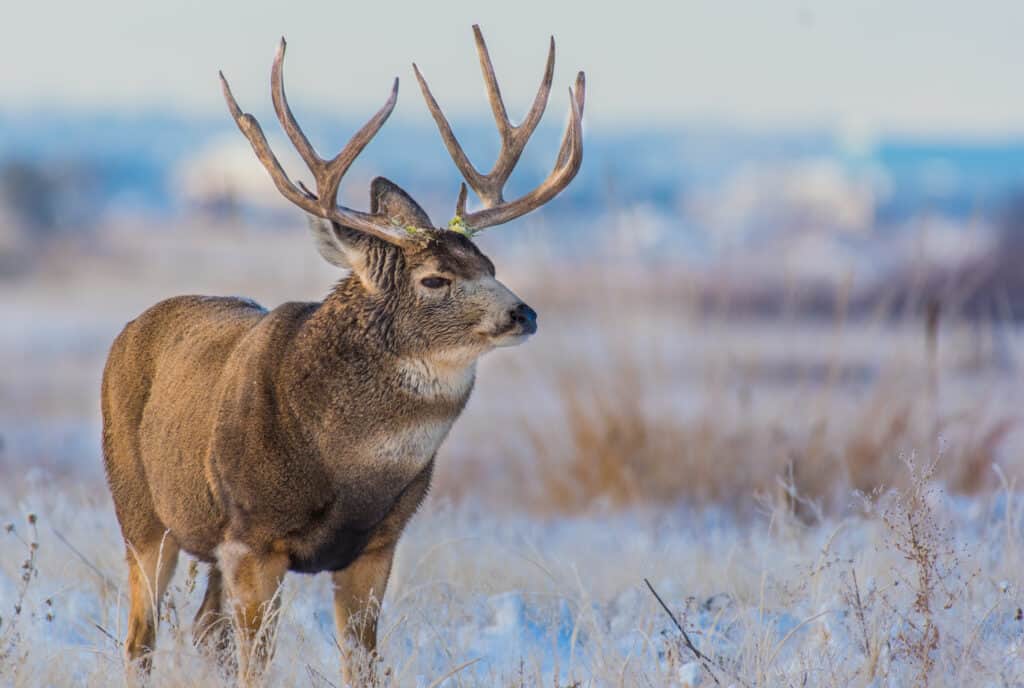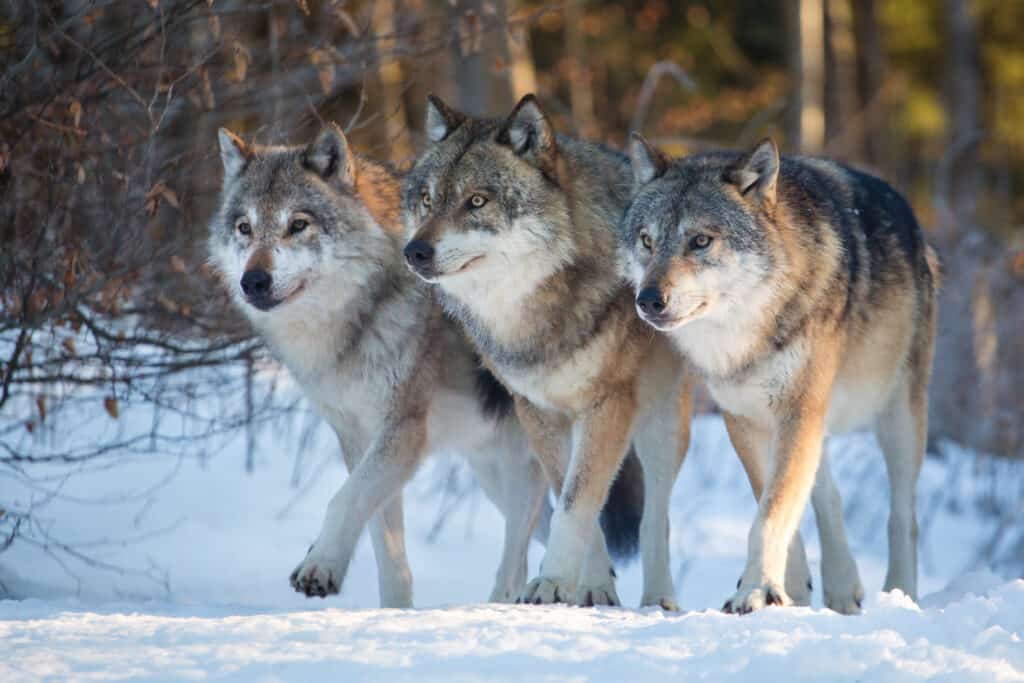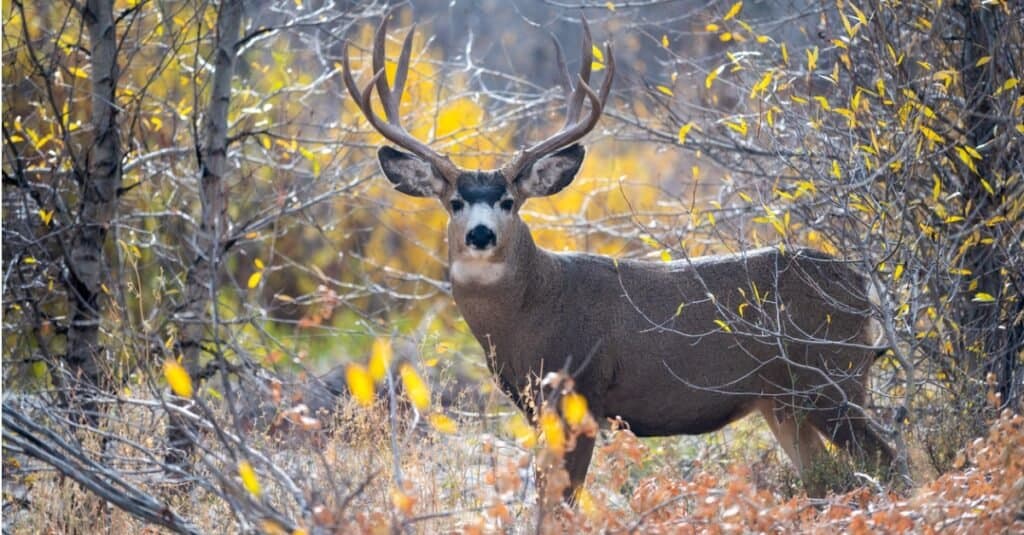Upon a casual glance, it might be difficult to tell apart species of deer. The mule deer, white-tailed deer, and black-tailed deer look very similar. However, even though they are very closely related, they are distinct species. This distinction is important for anyone who is specifically hunting the mule deer.
The mule deer has a very strong presence in the state of California. Some of the mule deer that have been caught in this state are quite imposing and large. If you want to discover the largest mule deer ever caught in California, keep reading!
Background Information On The Mule Deer
The mule deer is a medium-sized deer that populates a large part of western North America. Members of this species are somewhat curious and sociable.
The classification for mule deer can be somewhat confusing, as the mule deer is divided into two main groups – the mule deer and the black-tailed deer. They are technically separate species. However, scientists often treat them as one since they are conspecific, meaning they can interbreed and produce hybrids.
White-tailed deer are a closely related but distinct species.

Mule deer are herbivores feeding on the twigs and leaves of woody shrubs and herbaceous plants.
©iStock.com/Kerry Hargrove
Habitat And Range
Mule deer live west of the Missouri River, particularly in the Rocky Mountain region. They have adapted themselves to life in rocky, arid environments. They thrive best in areas with a mixture of plants, including many species, abundant early-stage plant growth, and quite a bit of shrub growth.
Mule deer are often present in desert regions, as long as there is enough food. They use the food to hide from predators and to eat. When the weather is very hot, they tend to migrate to higher elevations. When it’s cold, they move to lower elevations to avoid the snow in mountainous regions. These animals can also live well in wooded hills, chaparral, and mountain forests.
Diet
Mule deer are herbivores. Generally, they are browsers who feed on the twigs and leaves of woody shrubs and herbaceous plants.
They are fairly selective compared to other browsers, such as elk or cattle who share their habitat. Instead of eating large quantities of grass and other feed that is not of the highest quality, they tend to choose the most nutritious plants that they can find.
These deer eat many types of vegetation. These include fairy duster, mesquite leaves and beans, cat claw, buck bush, jojoba, and other grasses and shrubs. Mule deer derive significantly more nutrition from young plants than mature ones.
In some cases, these animals consume plants that have partially rotted, as well as leaves, flowers, fruit, buds, sprouting herbs and grasses, small twigs, and lichens.
Males tend to seek out habitats that are rich in food sources, although these habitats tend to attract more predators. Females are more likely to select secure habitats, in order to protect themselves and their young.
Deer typically forage for food around dawn and dusk, but they may be active at other times of the day depending on circumstances.
Predators
Common predators of the mule deer include mountain lions, coyotes, bears, eagles, bobcats, wolves, and humans. Humans also often hunt these animals for sport, especially in areas that have given them permission to do so.
The mule deer has keen eyes and ears, allowing them to sense predators off in the distance. However, they are still vulnerable to predators who hunt in packs, such as wolves.

Despite the mule deer’s ability to sense predators from great distances, they are still vulnerable to predators who hunt in packs, such as wolves.
©David Dirga/Shutterstock.com
Appearance And Size
The mule deer gets its name from the appearance of its large ears. These ears look like those of a mule; they are about 75% the length of the animal’s head.
The easiest way to differentiate between mule deer, black-tailed deer, and white-tailed deer is to look at the tail. Mule deer have completely white tails with black tips, black-tailed deer have black tails, and white-tailed deers have tails that are only white on the underside.
The coat of the mule deer is brownish-gray in the winter and reddish-brown in the summer. This species has a distinctive white patch on the rump and typically a narrow white tail that has a black tip.
Mule deer are usually between 4.5 and 7 feet long and 3 to 3.5 feet tall at the shoulder. They typically weigh anywhere from 130 to 280 pounds. On average, the weight of a female (doe) is about two-thirds the weight of a male (buck).

The mule deer gets its name from the appearance of its large ears which resemble those of a mule.
©Ginger Livingston Sanders/Shutterstock.com
Mule Deer In California
Mule deer and black-tailed deer are the two subspecies of deer that live in California. These deer are present throughout most of the state and are important for both hunters and simple nature enthusiasts.
There are six subspecies of mule deer (Odocoileus hemionus) in California: California mule deer, desert/burro mule deer, Southern mule deer, Rocky Mountain mule deer, Inyo mule deer, and Columbia black-tailed deer.
The Largest Mule Deer Ever Caught In California
The criteria for qualifying as the largest mule deer caught may be confusing. Hunting records are based on a system of antler scoring, rather than simple height and weight measurements of the deer.
Judges measure the antler at several different points, and they perform a calculation to determine the final score. There are two categories: typical (symmetrical) and non-typical (asymmetrical). Usually, non-typical record-breaking deer have antlers that score higher than the deer in the typical category.
The record for the largest typical mule deer ever caught in California was achieved by Frank M. Huglin in 1948. Judges gave this deer a score of 200-3/8. However, the largest mule deer ever caught in California was a non-typical mule deer, caught by Harold R. Laird in 1972, and the deer’s body was then given to Cabela’s, Inc. The deer received a score of 319-4/8.

Hunting records are based on a system of
antler
scoring, rather than simple height and weight measurements of the deer.
©iStock.com/EEI_Tony
The Largest Mule Deer Ever Caught In the World
Even though there are some extremely large mule deer in California, this is not the location of the world record. The largest mule deer ever caught was captured close to Chip Lake, Alberta. In the fall of 1926, Edmund Broder shot the “Broder Buck,” whose antlers received an impressive score of 355-2/8.
Where Is California Located On The Map?
The state of California is located in the Western United States along the Pacific Coast. It is bordered by the Pacific Ocean to the west, Oregon to the north, Arizona and Nevada to the east, and the Mexican state of Baja California to the south.
The photo featured at the top of this post is © iStock.com/twildlife
Thank you for reading! Have some feedback for us? Contact the AZ Animals editorial team.






